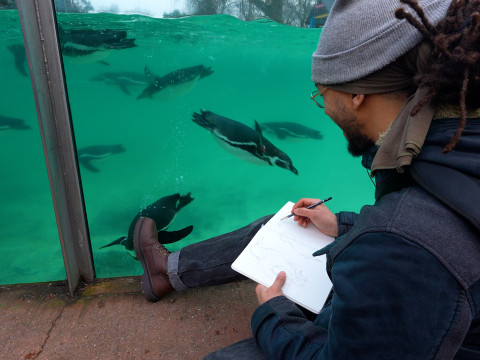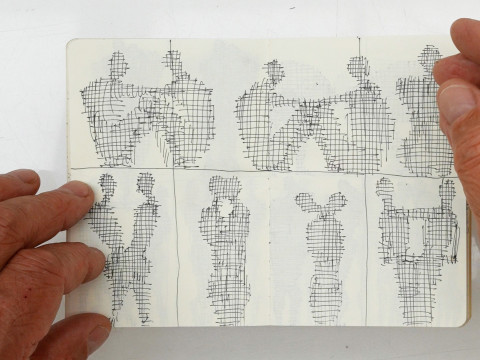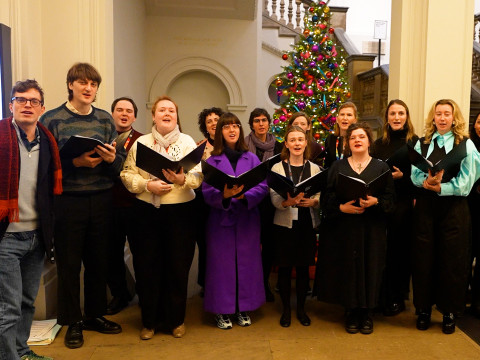
How it was made: Antony Gormley at the RA
Published on 30 October 2019
In this three-part video series, we take you behind the scenes of our Antony Gormley exhibition to show how key works were made and reveal the stories behind them.
ERROR - UnsupportedModule: CoverLoopVideoModule
The making of Antony Gormley’s ‘Mother's Pride’
“I'm asking you a question in material form. What is a human life? A human life is actually a process. It's not a ‘thing’ at all.” In this film, the RA’s Artistic Director, Tim Marlow, visits Antony Gormley in his studio where he and his team are working on the bread-based work Mother's Pride V.
The making of Antony Gormley’s ‘Cave’
"Michelangelo dealt with the resistance of marble, the intrinsic weaknesses of a block. Here we're dealing with the resistances of the building." Antony Gormley's Cave is a sculpture on an architectural scale. In this video, the artist talks to the RA's Tim Marlow about the challenges involved in creating Cave and installing it at the Royal Academy.
The making of Antony Gormley’s ‘Matrix III’
"This is the grid at the heart of the urban grid... The inner skeleton of the environment that we live in." Antony Gormley's Matrix III is a "perceptual maze", a vast sculpture that hangs suspended from the ceiling in the Royal Academy's largest gallery. In the final episode in our three-part series, Antony Gormley talks to the RA's Tim Marlow about the ideas behind this work and how it was made.
Films created with the support of: Veronica and Lars Bane Foundation
The RA's Head of Exhibitions Management, Idoya Beitia, shares more behind-the-scenes secrets:

Once complete, Host (2019) features an expansive pool of water. But before we poured approximately 33 tons of Atlantic seawater from the Isle of Portland into the gallery space, a team of roofers covered the floor and skirting with a waterproof lining. After this, we laid out 25 tons of Buckinghamshire clay.
The colour of the clay was important to Antony – the work is made to be seen in natural light, so as the day fades and the light changes, so does the colour of the water. It was vital that the method was watertight, so before set-up we made a replica of the gallery in Antony’s studio, using the same method of installation, filled it with water and then left it for a fortnight until we were confident that it worked.
As told to RA Magazine

These two works, from 1991-93, which are designed to be suspended from the ceiling, are displayed in Gallery IX, which ironically has the strongest floors. If you look up, you can see there are two steel cables running up into the glass dome. In between this dome and the external dome of the building are two, custom-made cranes which support the 2.5-ton weight of Fruit and the 5-ton Body.
As told to RA Magazine

The Perspex false ceiling in the room housing Lost Horizon I (2008) hides a system of six iron beams, onto which each of the 629kg cast-iron figures is attached by plates with rods threaded to their feet. We designed a lighting system to provide even light during the dark hours of the day. It was crucial that the beams and plates did not cast shadows as it would have spoiled the magic.
As told to RA Magazine

Antony Gormley at the RA
With work from his 45-year career alongside major new installations created for our galleries, we present Antony Gormley's most ambitious exhibition in more than a decade.
"A symphonic storm of a show" – Financial Times
"Spectacular" – London Evening Standard
Related articles

Video: drawing penguins at London Zoo
3 February 2025

My sketchbook: sculpture drawings by Antony Gormley RA
13 January 2025

Video: Merry Christmas from the Burlington House choir
18 December 2024